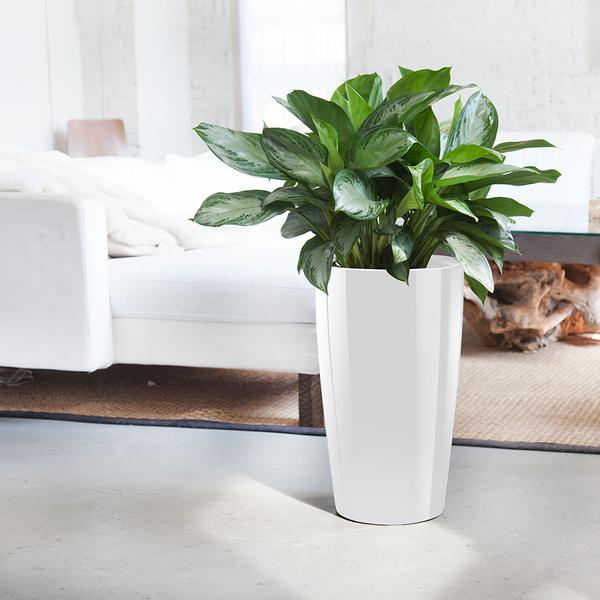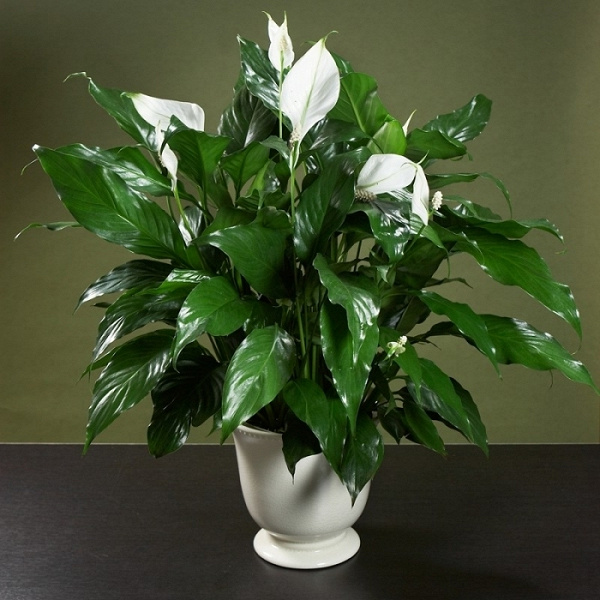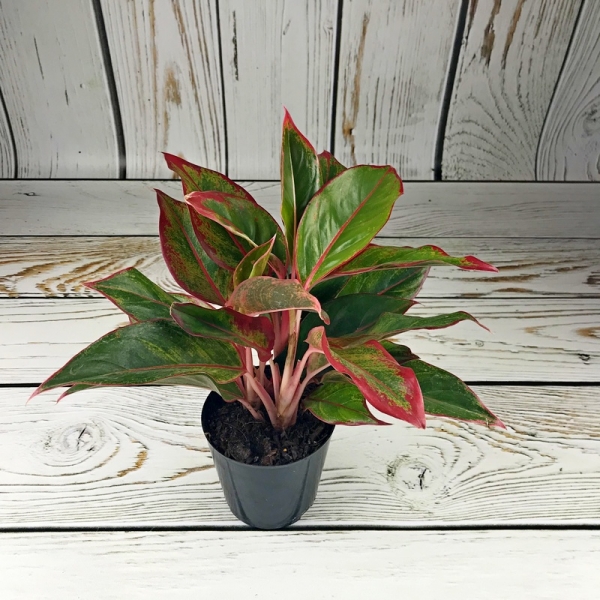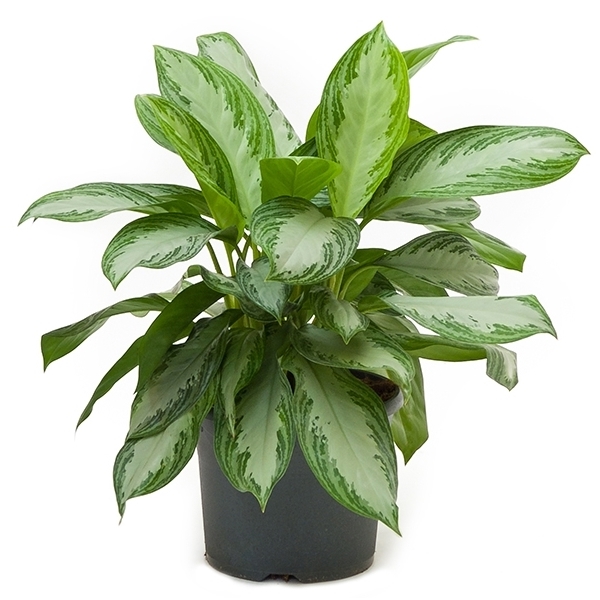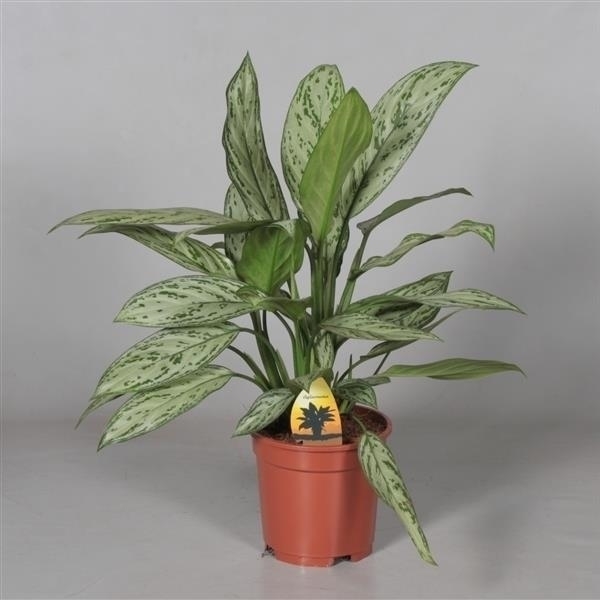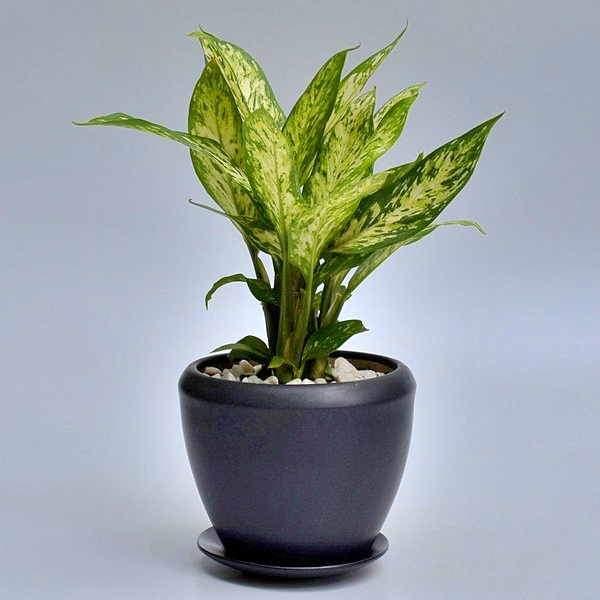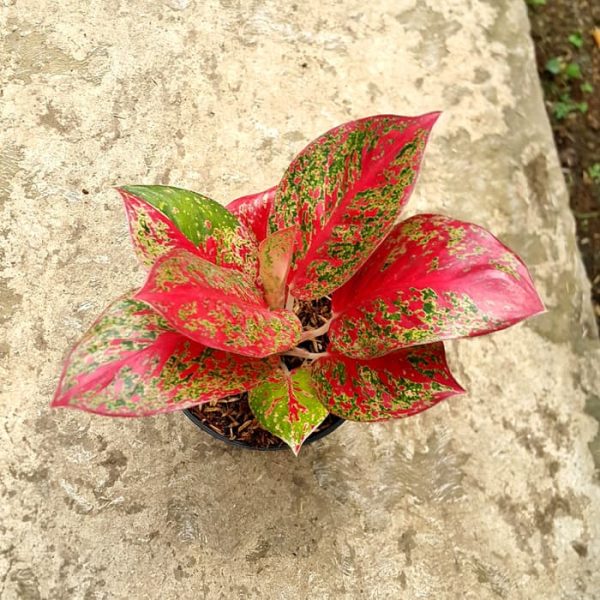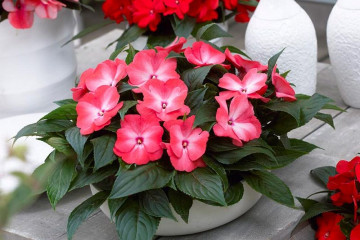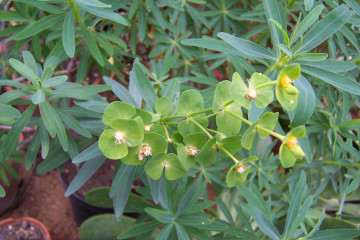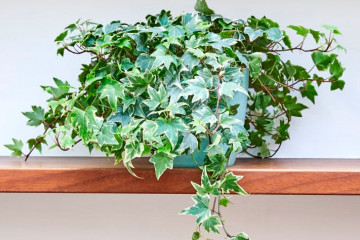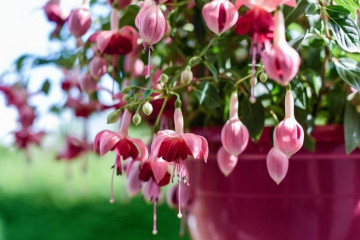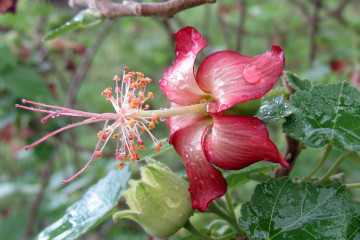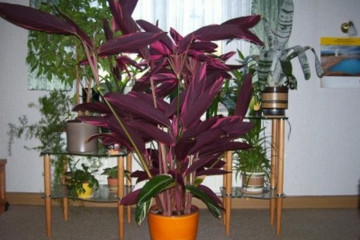Aglaonema indoor flower - types and flowering
Content:
Aglaonema flower is a beautiful houseplant native to Southeast Asia, India and China. It is similar in appearance to Dieffenbachia, but aglaonema has narrower leaves. Plus it's smaller.
The flower belongs to the Aroid family. It is perennial and grows along the banks of rivers and streams. Easily adapts to life in peat bogs, soil with a rocky surface and a small layer of humus. A large amount of nutrient soil is not required for the plant to live.
The flower grows to a height of 700 mm, its stems are short and fleshy. In young specimens, the trunk is invisible.
History of appearance
The flora is widespread in its homeland. Surprisingly, it was brought to Europe from Malaysia.
The history of domestication began in the 19th century. Until now, the plant is one of the most beautiful and unique inhabitants of the tropics.
Some specimens have become an integral part of the British Botanic Gardens collection. They were used by employees in breeding work, as a result of which hundreds of popular hybrids and indoor varieties were obtained. They all enjoy the attention of flower growers.
Bloom
The plant rarely blooms. This can only be achieved with careful care. The flowers are quite small, especially against the background of the large leaves of the plant. After flowering, small red berries may appear, which should not be touched, as they are poisonous.
Is it possible to keep aglaonema at home
The aglaonema plant, which has more than 20 species, has one important advantage - air purification. Leaves absorb a variety of compounds: formaldehyde, benzene, phenol. In addition, they are capable of producing phytoncides that destroy streptococcus.
The above suggests that it can be kept at home. There is only one drawback - acrid juice from the leaves. For this reason, it is best to remove the plant if there are small children or animals in the house who can taste the flower.
Types and varieties of indoor plants
There are more than 50 varieties of aglaonema. There are more than a hundred hybrid species. It is worth highlighting the most common ones.
Aglaonema Maria Christina
This type is called aglaonema changeable. Aglaonema Maria Christina is a plant with large silvery-gray leaves. They almost completely hide the stem. The leaves have dark green streaks. The flower can grow up to 70 cm, leaves up to 20 cm in length and up to 10 in width. There is no need to create special conditions for a representative of the flora. He is unpretentious in care. Spraying the leaves is helpful for the specimen. Watering is carried out with water, previously settled for at least a day. You can use water from the filter.
Aglaonema Crete
Aglaonema Crete stands alone among this kind of plants. The young flower has bright red leaves. Over time, other shades of green appear on the surface.The vein of the petal, which is located in the middle, does not change its color. If Crete is placed in a place with insufficient light, the leaves will become expressionless and dull.
Aglaonema Silver Bay
The variety was obtained by breeders at the end of the 20th century and in a short time acquired the love of flower growers. A representative of this species has atypical leaves. They are not oblong like other varieties, but round. In length, they can reach up to 35 cm. The edges of the leaves are green, and the centers are light gray. Silver Bay will require a lot of space, as the variety grows a lot, albeit over a long period.
Aglaonema Silver Queen
The specimen is considered one of the most unpretentious to care for. In regions with warm climates, it can be grown even outdoors. In order for the plant to be comfortable, it is placed in a place partially covered by a shadow. It is not recommended to place it in direct sunlight.
The leaf plates are elongated. Their front side is silver in color, there are green blotches. The leaves can be up to 15 cm long and 8 cm wide.
Aglaonema is changeable (or changeable)
This representative can most often be found in the home collections of plant breeders. His homeland is the Philippines. The flower can reach a height of one and a half meters. The leaves are found in different shades of green. There are silver spots on the surface. In length, they can reach 30 cm, in width - 10.
It blooms with small flowers. After flowering, red berries are formed, which add attractiveness to the representative of the flora.
Aglaonema variable variety - Silver Queen, common among indoor flower lovers. It is also unpretentious in care, like other aglaonema varieties.
Aglaonema Stripes
The plant loves light and warmth. The stem over time becomes woody. Lanceolate leaves. May be variegated and green. The flowers are shaped like an ear, covered with a cream-colored bedspread. They are shaped like an ear. Sometimes the flower can have a shade of yellow or green. Peduncles are short, their length does not exceed 15 cm. The flower does not need artificial pollination. The seeds are sown for 12 months. There is no binding to a specific season.
Aglaonema Pattaya Beauty
This interspecific hybrid is more common than other varieties. The plant is bushy in a special way, due to which it acquires an elegant and sophisticated appearance. The stems are very thin. However, they have very large oval-shaped leaves. As it matures, the bush becomes like a palm tree, as the lower foliage falls off.
To feel comfortable, Pattaya is placed in a low-light room. It perfectly tolerates drafts, sudden temperature changes and dry air.
Aglaonema thai
Thai flowers have a huge number of varieties. Among them are: Cananga odorata, Calophyllum inophyllum, Calliandra haematocephala and others.
Aglaonema pink
The plant can grow up to 40 cm. The main feature that distinguishes this specimen from the rest is striped leaves with an uneven color. On the dark green surface of the Pink Jed aglaonema, there is a central crimson vein and transverse pink veins. In addition, you may notice light spots. These signs will allow you to decorate any interior in a dignified manner.
Aglaonema red
Relatively recently bred by breeding. It differs from other representatives in the bright red color of the leaves, on which green shades appear over time.One of the species is the Aglaonema Butterfly. The name is due to variegated leaves that resemble butterflies by description.
Aglaonema Treiba
Exotic flower with dense long leaves. The color variation depends on the variety. It can be green or have a variegated combination of shades. The flowers are pale yellow. They have no decorative value.
Aglaonema modest
Her homeland is South China and Laos. It can reach a height of 60 cm. The leaves are oval, have a rich green color. After flowering, bright red fruits are formed, which in appearance are similar to dogwood.
Other well-known varieties include "Greenlight" aglaonema (it can reach 100 cm in height, there is a light pattern on wide dark green leaves), "Green Lady" aglaonema (pointed-shaped leaves, in winter they acquire a lighter color than in summer), Prestige ( a distinctive feature - peach leaves interspersed with green).
Dieffenbachia and aglaonema: differences
Both plants belong to a huge family called Aroids. Aglaonema is considered a relative of Dieffenbachia. Not surprising, because they are very similar in description. But there are some differences that make it possible to identify a specific plant variety.
Comparative characteristics
| Criterion | Aglaonema | Dieffenbachia |
| The size | Can grow up to 70-100 cm | Often reaches a height of 2 m |
| The form | More like a bush | An adult plant is shaped like a tree |
| Leaf growth | Grow on separate stems | Grow on the trunk |
| Bloom | Flowering is characteristic of aglaonema, after which red fruits appear | At home, flowering is unusual for a plant. |
| Number of species | From 20 to 50. In addition, breeders have developed a huge number of hybrids that are shuffled like a deck of cards. Disputes over species, varieties and variations about the exact amount are still ongoing. | There are from 30 to 40 (according to various sources) |
| Reproduction | By cuttings, seeds, dividing rhizomes, air layering | Apical or stem cuttings, air layers |
Aglonema is a tropical plant that is known for being easy to care for. A shaded room is suitable for him, where direct sunlight will not fall. Watering is recommended with settled water.
Video
